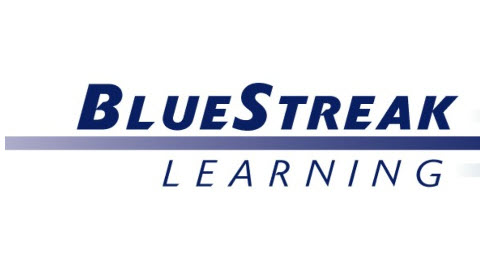Executive leaders often see training as a necessity, but not as something that brings much tangible business value. In their eyes, training is required as new hires are onboarded, or as skills and technologies change.
But most executives don’t see any business impact, and as a result they’re reluctant to make the investment in the budget for a better LMS to improve your training program..
As the training manager of your extended enterprise, you realize that an effective training program can drive organizational success. But convincing executives of the importance of training as a competitive differentiator is a difficult task.
If you want to build a high-impact training program that contributes to your organization’s success and growth, you need the budget to purchase the right learning management system (LMS). And that means articulating a compelling business case for your training program.
That might feel daunting, but you can do it, if you know how to speak their language.
Align with Strategic Objectives
Every decision your executive leadership makes is weighed against the company’s strategic objectives. So it’s your task to show them how your training program can deliver a return on investment that improves employee performance and drives business outcomes.
Aligning your proposal with the organization’s strategic objectives sets the stage when making a business case to your executives. Highlight how an LMS can contribute to overarching goals such as improving employee performance, enhancing customer satisfaction, or driving revenue growth.
When executives ask why they should invest their money in purchasing a new LMS, you’ll want to have a solid answer that satisfies their priorities, not yours.
How to Avoid Getting Burned When Purchasing a New LMS
Your leaders are also always looking at the performance of your organization’s partner networks. Metrics such as units sold, repair orders completed, parts sold, and customer retention are at the top of their priority list. Every operation in the partner network has an expense associated with it, and an expectation of performance. If training can improve those results, then that turns your training program into a strategic asset.
Framing the discussion to highlight strategic alignment with these types of metrics demonstrates the tangible impact of an LMS on the organization’s bottom line. Having an LMS that allows you to combine them together and associate them in the training program is key.
Quantify the Benefits
Executives are accustomed to evaluating proposals based on potential returns. Therefore, quantifying the benefits of an LMS is crucial. Consider metrics such as increased productivity, reduced warranty costs, units sold, and improved compliance.
When you put money into an investment, you want a clear idea of what you’ll get out of it and by what time frame you will begin to see that return. Compiling data-driven evidence that shows where profits can be increased and costs can be reduced by this investment presents a clear ROI (Return on Investment) for your executives.
Be sure there is a clear plan for measurement, reporting, and evaluation that will provide insight into the performance and impact along the way. Also, be proactive about including those metrics on performance reports and scorecards to increase visibility internally and externally to your partners.
Once a clear picture is presented that shows the costs, benefits, and ROI of implementing a new LMS, you might have your executives’ attention.
Access LatitudeLearning, Free for 30 Days
Put LatitudeLearning to the test.
See why it’s the best LMS for extended enterprise training.
Learn more
Highlight Scalability and Efficiency
In the context of an extended enterprise, scalability is paramount. Emphasize to your executives how an enterprise LMS can scale alongside the organization and accommodate the diverse needs of employees, partners, and customers across geographies and time zones.
Furthermore, underscore the efficiency that can be gained through automation, centralized content management, and streamlined administrative processes. These items position the LMS as a catalyst for operational excellence and agility.
Address Compliance and Risk Management
In industries subject to regulatory requirements, compliance training is non-negotiable. An LMS offers robust features for tracking, reporting, and auditing compliance training activities, thereby mitigating risk and ensuring organizational adherence to regulations. Emphasize the importance of compliance and risk management in safeguarding the organization’s reputation and avoiding costly penalties and specify how an LMS makes it easy to monitor these variables.
Additionally, being able to define the Minimum Training Requirements (MTR) and track that your partners are maintaining a required number of accredited personnel gives you visibility, assurance, and reduces risk. With the real-time tracking capabilities of an LMS, you will be able to tell at a glance which partners are in compliance and which ones need continued training and accreditation to maintain certifications.
Showcase the Competitive Advantage
In today’s competitive landscape, organizations must differentiate themselves to thrive. An LMS can be a source of competitive advantage by enabling continuous learning, upskilling, and knowledge sharing. Robust training programs facilitated by an LMS can attract top talent, foster innovation, and position the organization as an industry leader.
Changing the way your organization views training can be your differentiator in the market. If you are simply checking the box for training that isn’t related to the skills that drive your business forward, your training program will have little impact on your bottom line.
By making training measurable based on performance, you can identify where training is changing the landscape of your organization. Which training is improving the units sold metrics? Which training is making a difference in customer retention? Once you have pinpointed those specific activities, you can adjust other areas of your training program to align with those that are making an impact.
Demonstrate User Experience and Engagement
Selling your executives on a new LMS isn’t your only hurdle. While they might be on board for the investment, you’ll want to make sure that you’ve considered how a new system is going to impact your partner networks.
If you invest in an LMS that isn’t adopted by your partner network, it’s all for naught. User experience is paramount in driving adoption and engagement. You must showcase the proposed LMS’s user-friendly interface, personalized learning paths, and interactive features to illustrate how these elements contribute to higher learner satisfaction, increased knowledge retention, and, ultimately, improved performance outcomes.
How to Untangle Yourself from an LMS You’re Dissatisfied With
Lean on LatitudeLearning
When making a business case for an LMS, make sure you’ve selected the right LMS for your organization. Extended enterprises have a myriad of complexities and integral inner workings that a corporate-style LMS can’t appropriately support.
If you want to get the most out of your investment in your extended enterprise, look no further than LatitudeLearning LMS. Built with the extended enterprise in mind, LatitudeLearning LMS supports the complexity of partner networks, including differences in products sold, training required, and organizational structure.
With robust analytics and integrations, LatitiudeLearning LMS makes it easy to pull reports and see the results of your training in real-time. These reporting tools assist organizations in making data-driven decisions.
Making the business case for an LMS in your extended enterprise requires a strategic approach grounded in data, alignment with organizational goals, and a focus on tangible outcomes.
If you can quantify the benefits, address scalability and compliance needs, and showcase the competitive advantage, you can garner executive support and pave the way for transformative learning and development initiatives.
Remember, the investment in an LMS isn’t just about training—it’s about maximizing performance and driving the organization toward its full potential.
The best way to know if you have selected the best LMS for your extended enterprise is to try it on for size. Check out our website today and request a demo to see just how the right LMS can change the training landscape of your organization.





